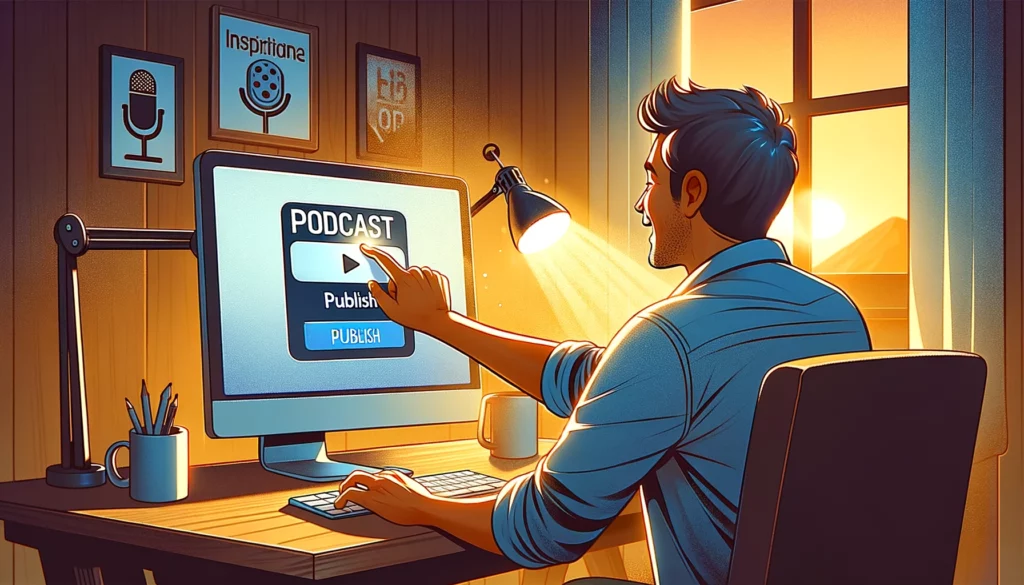
If you’ve been thinking about starting your own podcast, but have felt too intimidated to even know where to start, we’ve got you!
It seems like everyone has a podcast these days, but not everyone is setting themselves up for sucess. Knowing how to get yourself started can seem like an insurmountable hill, but it doesn’t have to be. We’ve put together this handy list to give you the birds-eye view of how to start your podcast so you don’t have to waste time spinning your wheels.
1. Conceptualizing Your Podcast
The first step is to define your podcast’s concept. This involves deciding on the theme, target audience, and what makes your podcast unique. Think about the reason behind starting your podcast and the unique angle you can bring to the table. For example, if you’re discussing health and fitness, your personal journey can be a unique selling point.
2. Show Structure and Format
Your podcast’s structure and format should align with your goals and target audience. Common formats include interview style, solo-host, roundtable discussion, and narrative storytelling. It’s essential to maintain a consistent format for brand identity, though occasional format blending can be effective. Avoid frequent format changes as it can confuse your audience.
3. Equipment and Recording
Investing in the right equipment is crucial for producing quality content. Start with the basics: a good microphone, headphones, and recording software. You don’t need to make substantial investments initially, especially if you are testing the waters. Personally, we’re big fans of the audio company, Rode. They’ve put out gear and hardware specifically aimed at taking a lot of the guesswork out of starting and producing a podcast. For some of our favorite gear, check out our wish list at Sweetwater.com.
For recording software, options include free tools, like GarageBand (for Mac users) and Audacity, but you can also use premium tools like Apple Logic Pro, Presonus Studio One, or Descript. Each has its pros and cons in terms of compatibility and user difficulty. Recording platforms like Squadcast, Riverside.fm and Zoom are also popular for remote interviews. Personally, we’re big fans of Riverside, and you can try it for FREE with this link: Riverside.fm
4. Episode Planning and Avoiding Podfade“
Podfade” is the loss of motivation or consistency in podcasting, and it’s a common challenge. To avoid this, plan your content strategically. Have a list of topics, plan individual episode elements, and consider recording several episodes before launching. Tools like Asana, Trello, or Google Drive can be helpful for project management. If you’re planning on interviewing guests, work on scheduling a half dozen or more so you can get them in the calendar and focus on creating questions for them ahead of time.
5. Creating a Trailer, Intro, and Outro
Your podcast should have a compelling trailer, intro, and outro. The trailer introduces your podcast and should excite potential listeners. The intro and outro are consistent elements in each episode that contribute to your podcast’s identity. The most common intros and outro contain theme music and/or a musical sound-bed that plays underneath the voice doing the intro and outro. You can find great music at sites like EpidemicSound and Audiojungle. You can get a 7 Day Free Trial at EpidemicSound here.
6. Naming and Scheduling Your Podcast
Choose a unique name for your podcast and check for its availability. If you’re planning on having a website for the podcast, now is also a good time to check if the domain name is available. You can do that over at Godaddy.com. It’s also important to determine your launch date and publishing schedule. Consistency is more important than frequency, so choose a schedule you can maintain, whether it’s weekly, bi-weekly, or monthly.
7. Selecting a Podcast Hosting Service
A podcast hosting service is necessary for storing your audio files and distributing them to platforms like Apple Podcasts and Spotify. Popular hosting services include Anchor, Libsyn, Buzzsprout, and Spreaker. These platforms offer various features, including analytics and monetization options. We personally recommend Spreaker.com, as it’s the one we have the most experience with.
8. Podcast Artwork
Your podcast artwork is crucial as it’s often the first thing potential listeners see. It should be clear, brand-consistent, and the correct size (Apple suggests 3000×3000 pixels). Tools like Canva can help you create your artwork.
9. Online Presence and Promotional Plan
Establish an online presence for your podcast with a simple website and social media accounts. A newsletter is also a good idea for direct audience engagement. Your promotional plan should include reaching out beyond your network, utilizing social media, and possibly collaborating with other podcasters for promotions.
10. Launching Your Podcast
Once everything is in place, you’re ready to launch your podcast. Remember to celebrate this milestone as it marks the beginning of your journey as a podcast creator.
